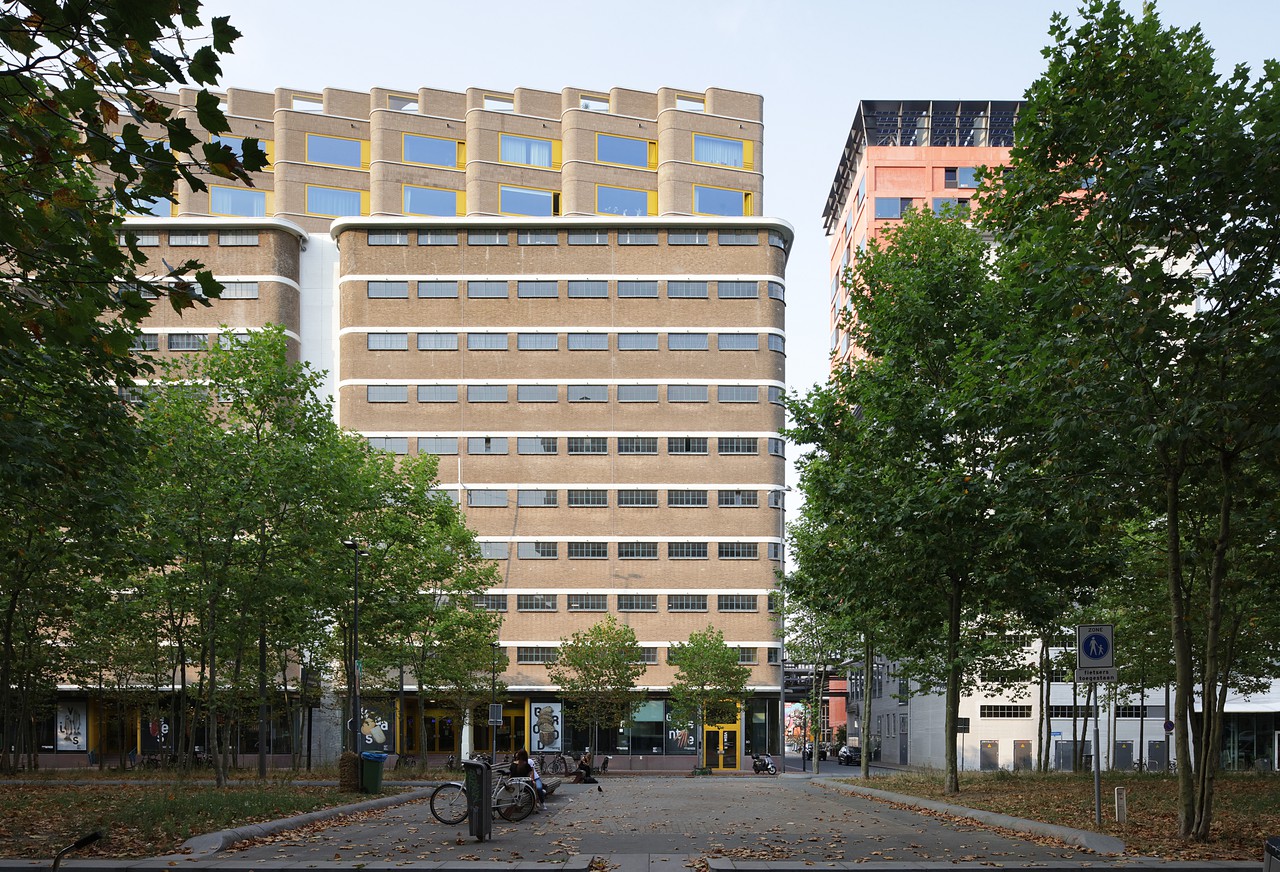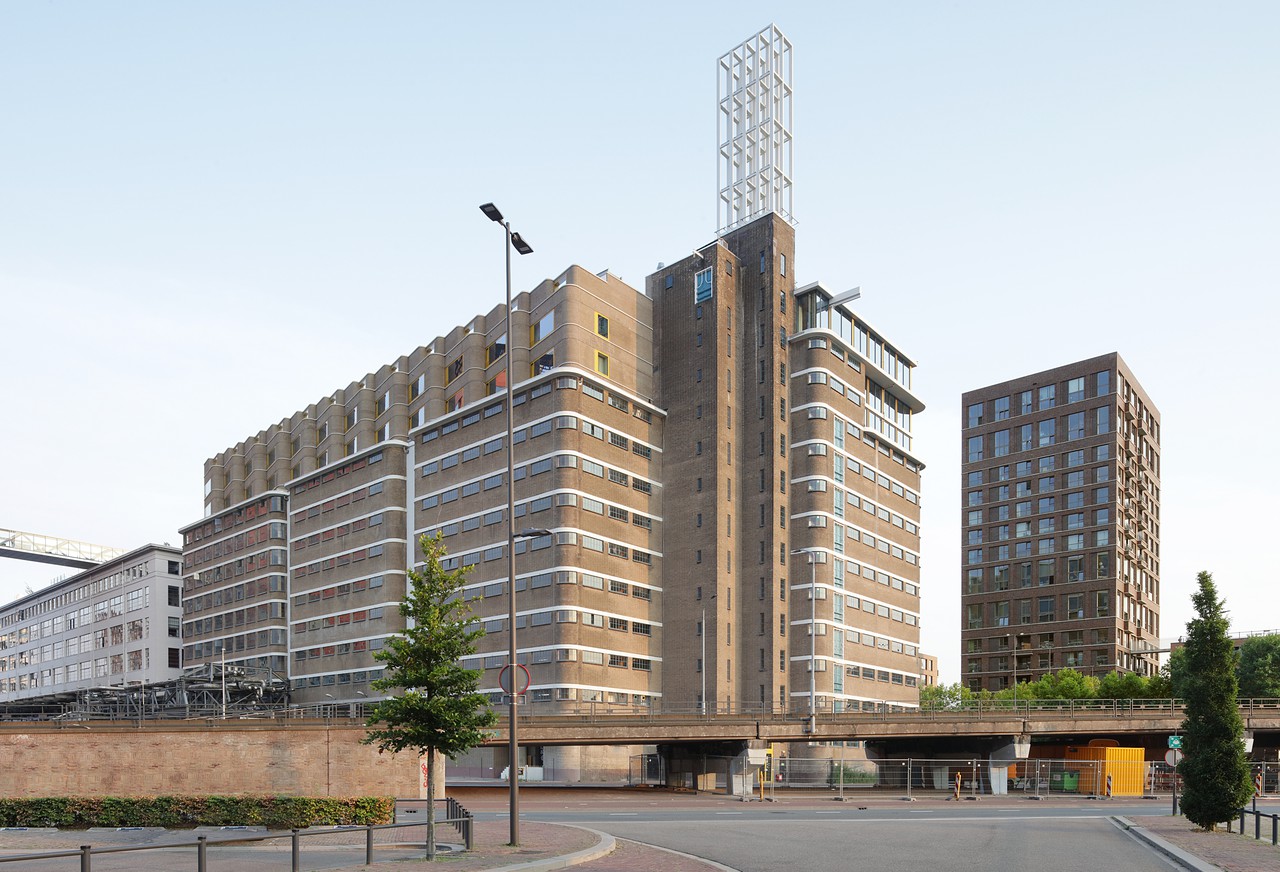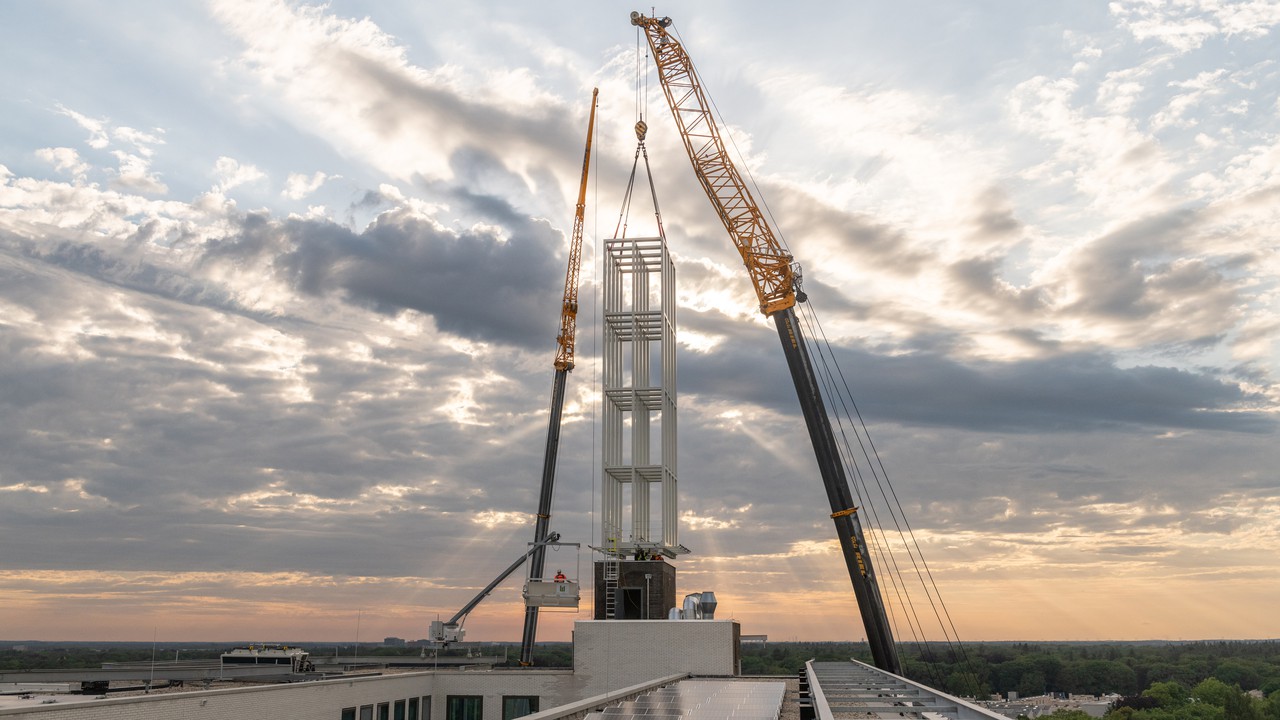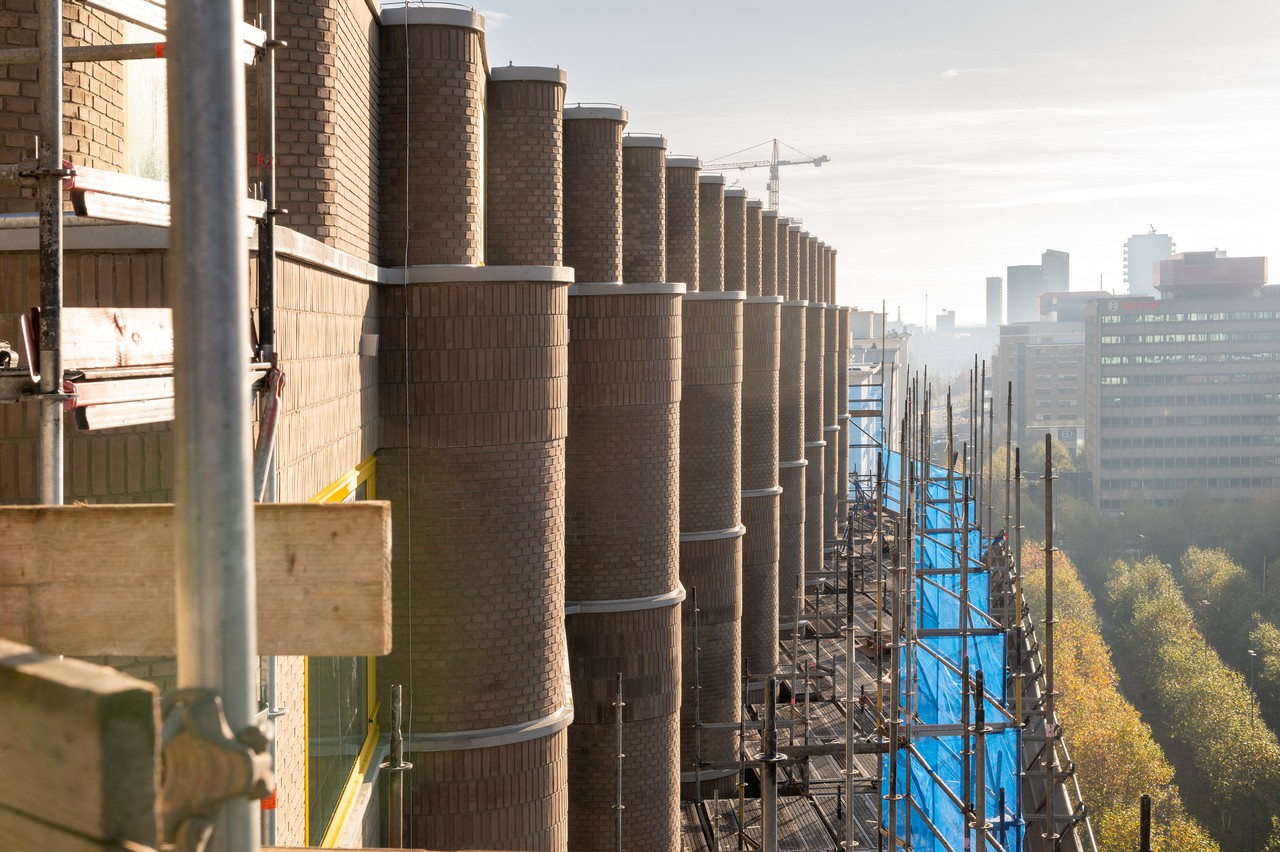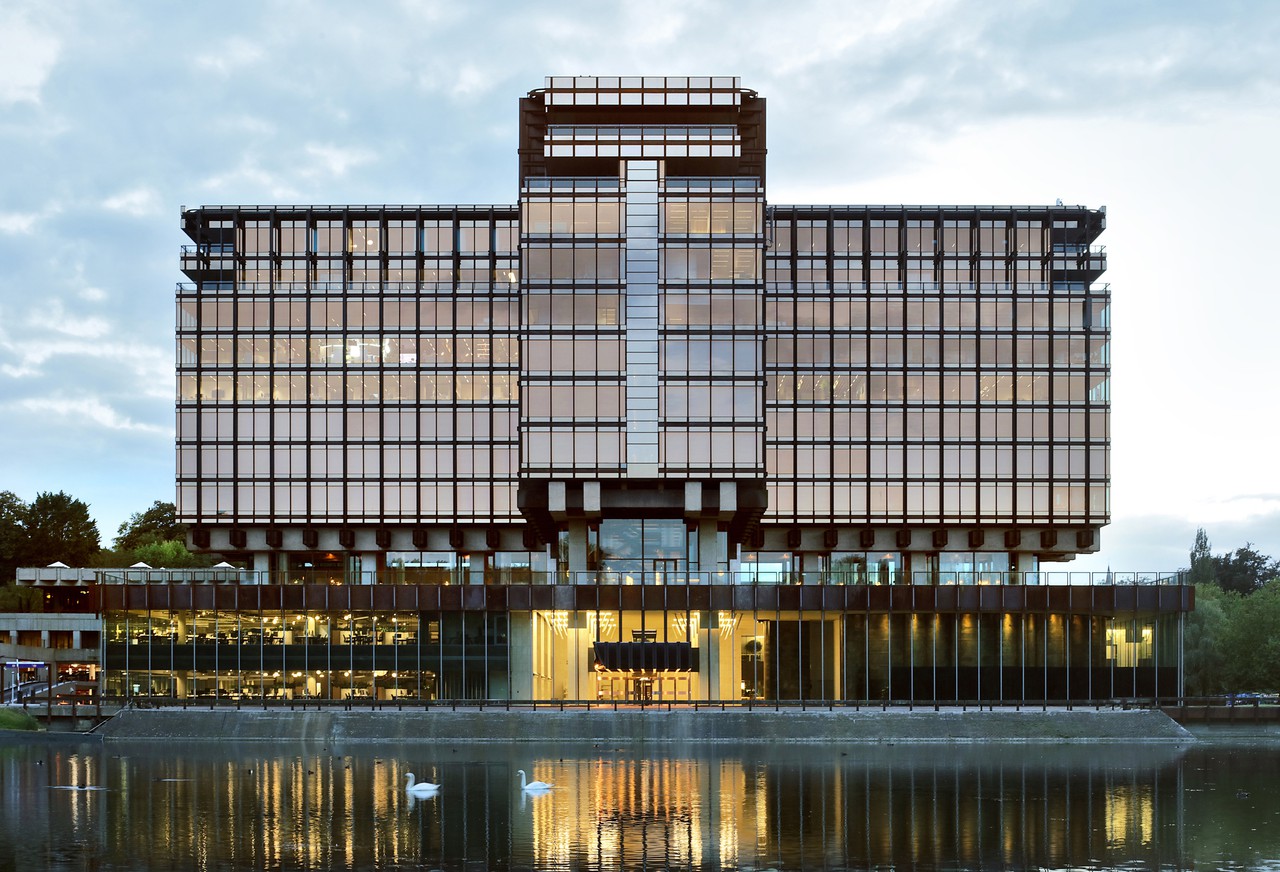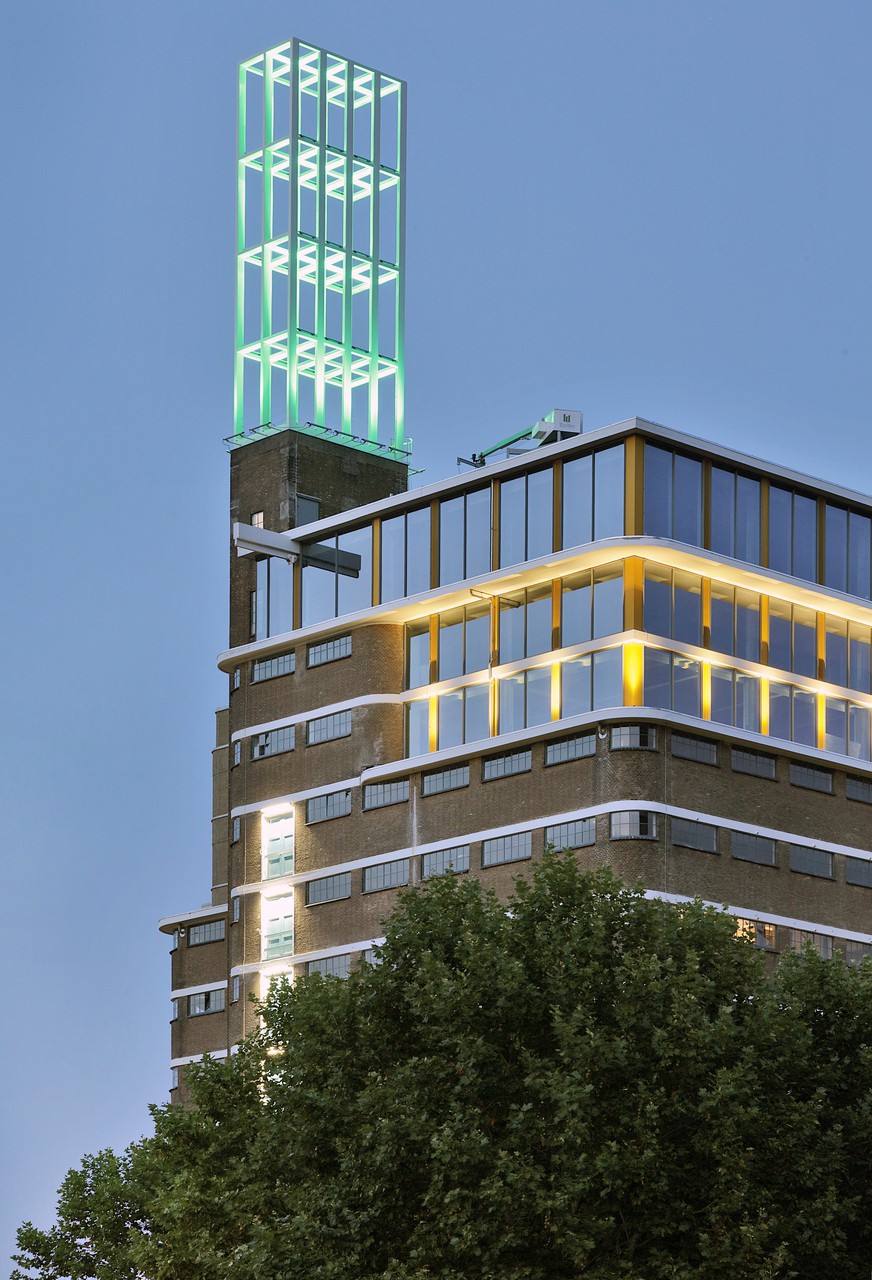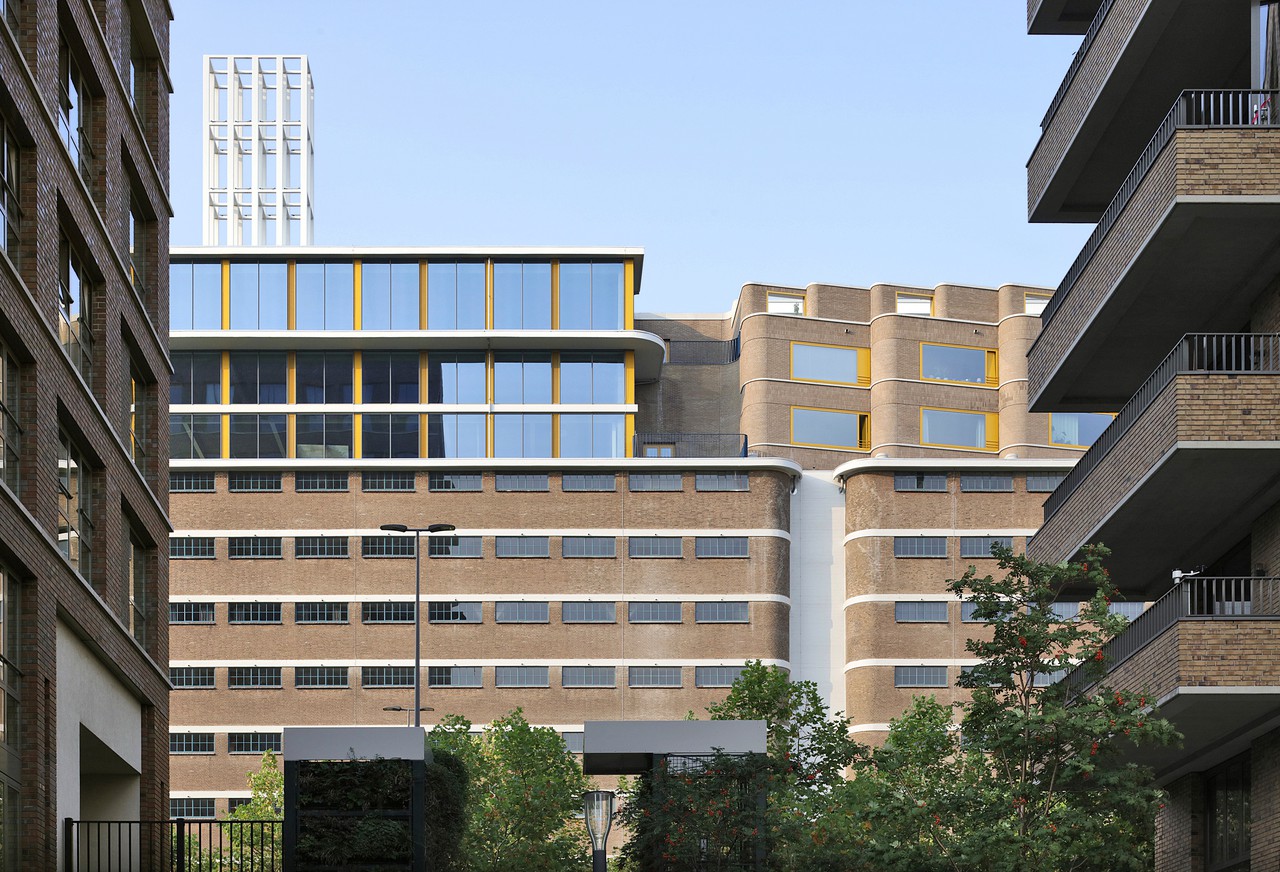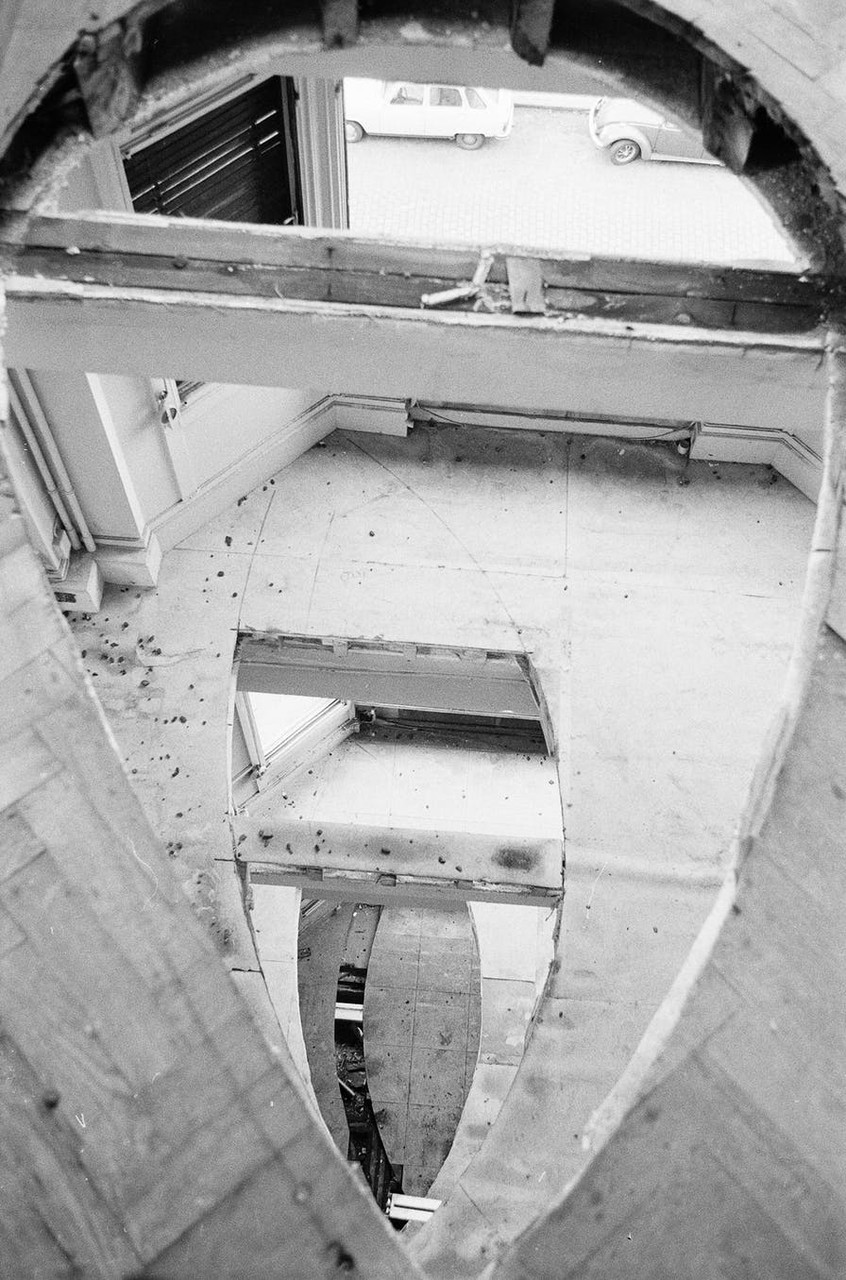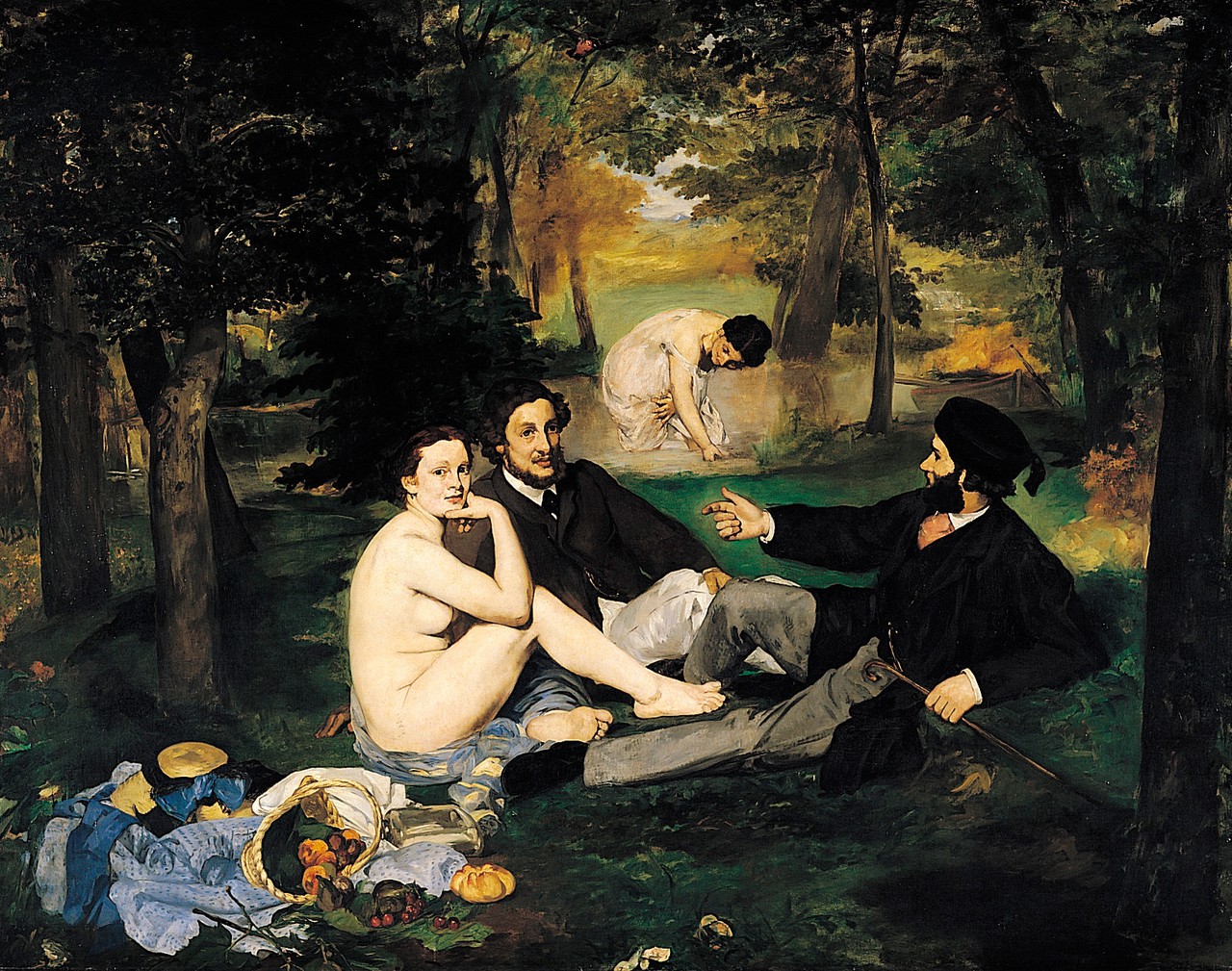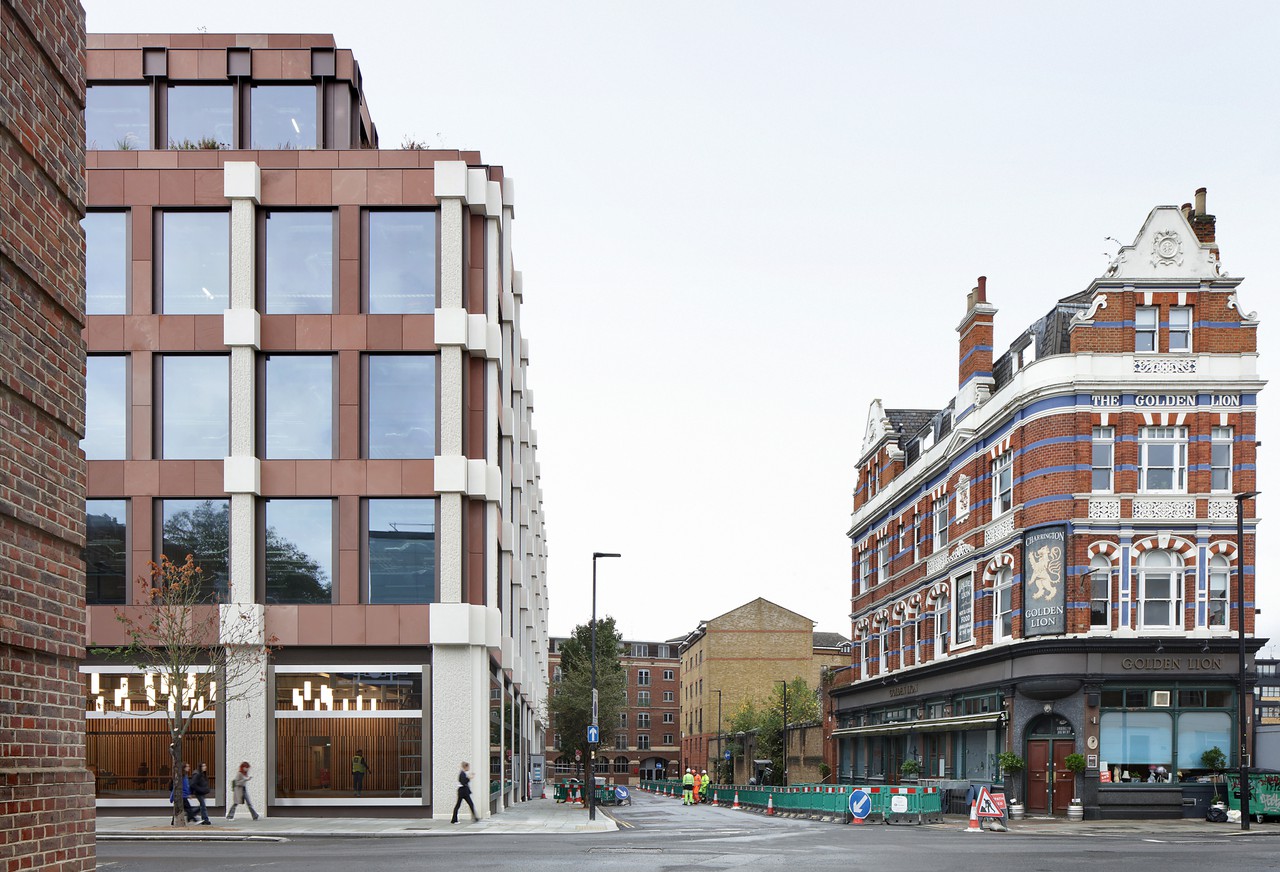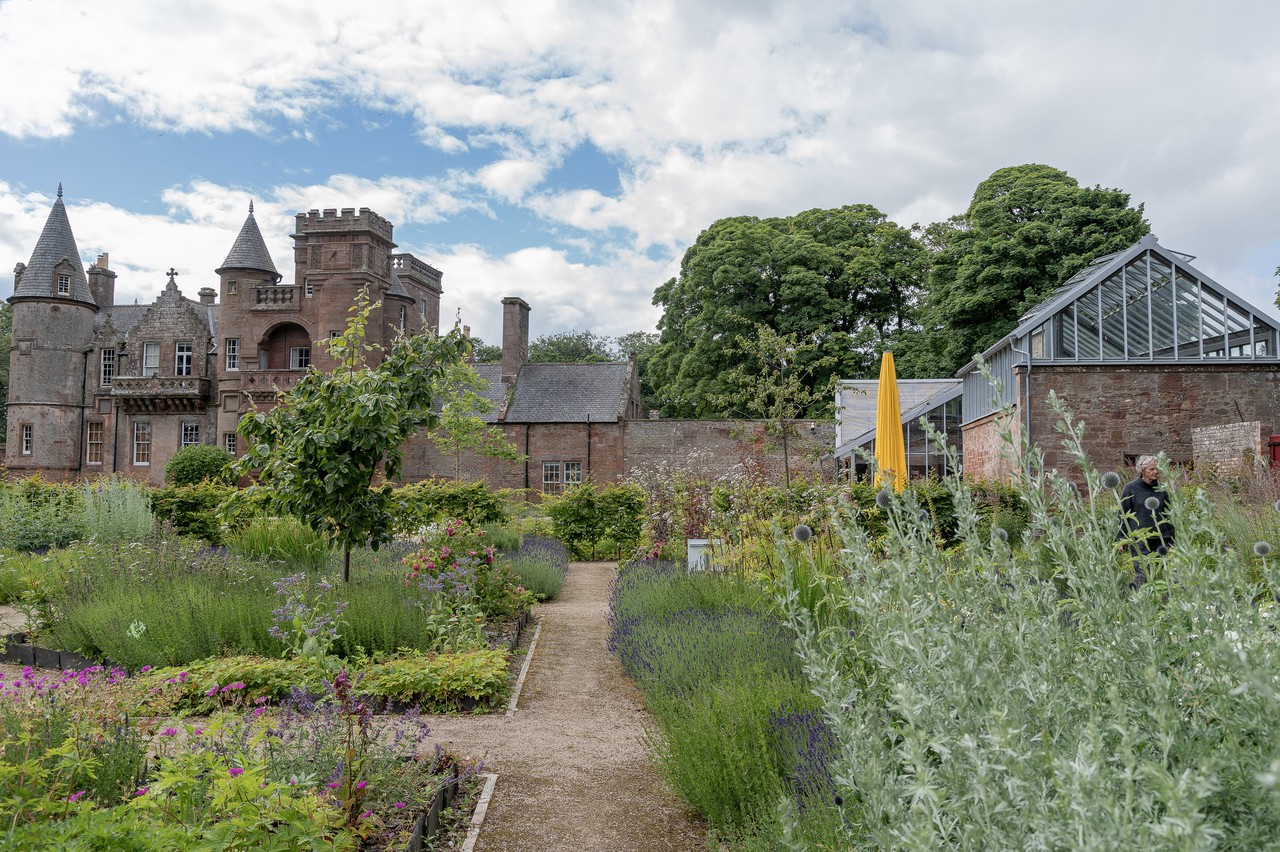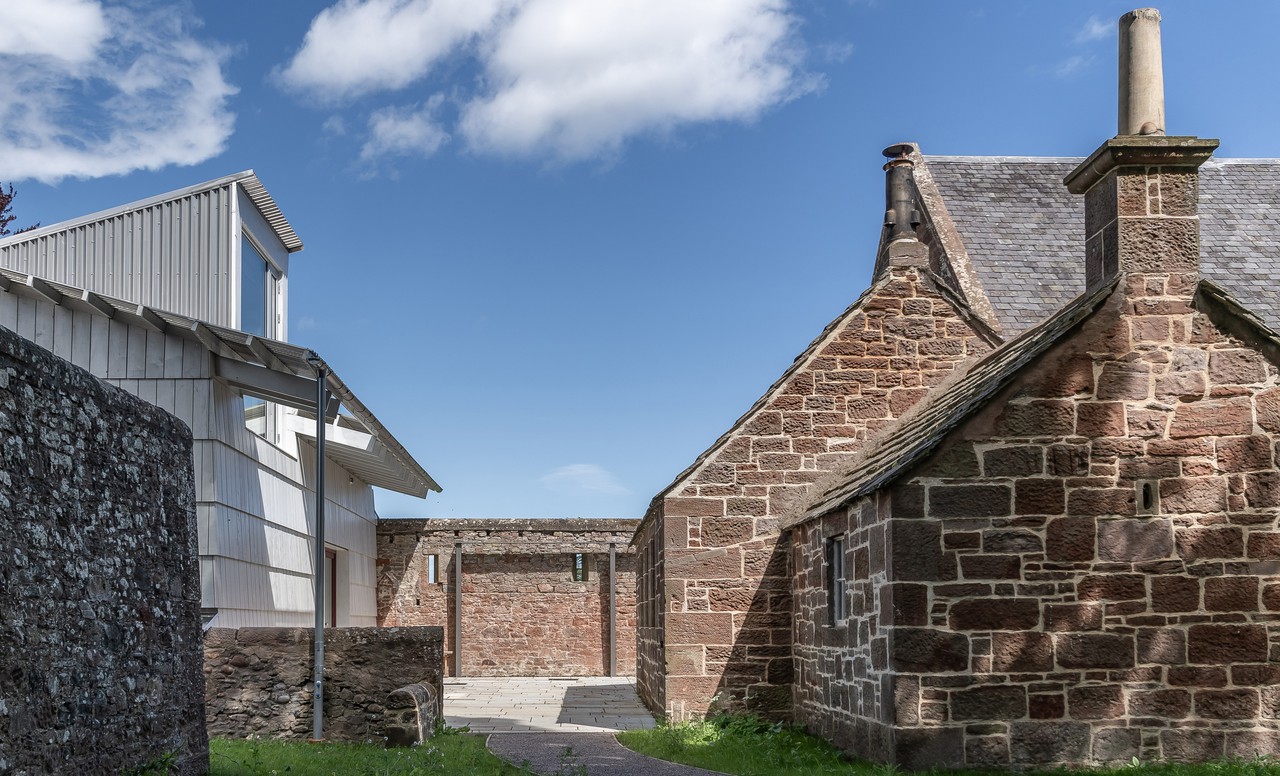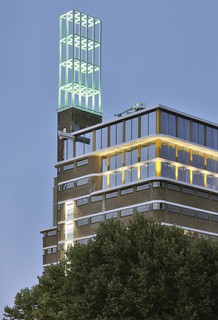
Caruso St John's Veemgebouw building is reviewed in the Architects Journal's Climate Crisis issue. Rob Wilson explores the project's respectful and flexible retrofit of the listed 1940s warehouse, part of the former Philips factory complex. The building now provides a mix of housing above a range of public and commercial spaces.
Photo © Filip Dujardin.
Related news
Marco Biagi explores the approach of international practices to decommissioned industrial buildings. Citing a range of recently completed projects, including Caruso St John's Veemgebouw, he discusses the rise of adaptive reuse. Biagi explains through our urgent environmental crisis, the reuse of industrial plants and depots is more necessary than ever, offering a new challenging creative outlet for contemporary architects.
Construction has completed on Caruso St John's redevelopment of the Veemgebouw, a former Philips factory building on Strijp S in Eindhoven. The monumental industrial site in the Brainport region of the city is now the centre of a lively urban environment.
The design repurposed the existing floors to create a varied mixed-use structure; including workspaces on the upper floors, a car-park and a food-hall on the ground floor. The project also included the addition of 38 rooftop studios and maisonettes.
The mast has been craned into place on top of the Veemgebouw. The design features integrated LED lighting, continuing the local tradition for night time illuminations across the city's skyline. It echoes the mast that stood on top of the building in its previous incarnation as a factory for the Philips electrical company.
The landscape and interiors of Caruso St John's Veemgebouw Strijp S are now taking shape. The top floor of new construction contains 40 apartments, arranged around a landscaped courtyard, with external facades of curving brickwork that form a new dramatic top to the building.
Peter St John will be the keynote speaker at the annual Solemn Opening Ceremony of the Order of Architects in Belgium. He will discuss Caruso St John’s work on transforming existing buildings in Europe.
Caruso St John has won a RIBA International Award for its ‘innovative and joyful’ conversion of the Veemgebouw in Eindhoven, which has transformed the 1940s Philips electrical company warehouse into a modern mixed-use urban building.
In conversation
Florian Zierer
Berlin International University of Applied Sciences
Berlin, Germany
8th October 2024
Florian Zierer will be in conversation at the Berlin University of Applied Sciences on 8th October 2024, introducing the practice's recent projects with existing buildings.
Lecture
Reuse, Recycle
Lessons in Sustainable Architecture
Eindhoven, The Netherlands
10th February 2022
Peter St John is taking part in TU Eindhoven's lecture series, Lessons in Sustainable Architecture. His talk, Reuse, Recycle will discuss the practice's renovation projects with a focus on their sustainability and design process.
Following his January 5th lecture All Buildings are Beautiful at the Museum of Contemporary Art in Warsaw, Adam Caruso was in conversation with architect Aleksandra Czupkiewicz. A transcript of their discussion is published in the March edition of Architektura Murator.
St Pancras Campus is reviewed in the March edition of the RIBA Journal. Chris Foges speaks to Peter St John about the state of commercial development in London, discusses the building's contribution to its urban setting at the border of Kings Cross and Camden Town, and commends its rich detailing and high quality approach social housing.
Hospitalfield features in the third issue of Alder, a publication documenting Scotland's modern architecture, produced by the office of Mary Arnold-Forster.
Rowan Moore includes the new studio building at Hospitalfield features in his top five projects of 2024, calling it "a playful, expressive structure in which fun is had, in the tradition of Arts and Crafts architecture, with eaves, gutters, cladding and other basics of building".
